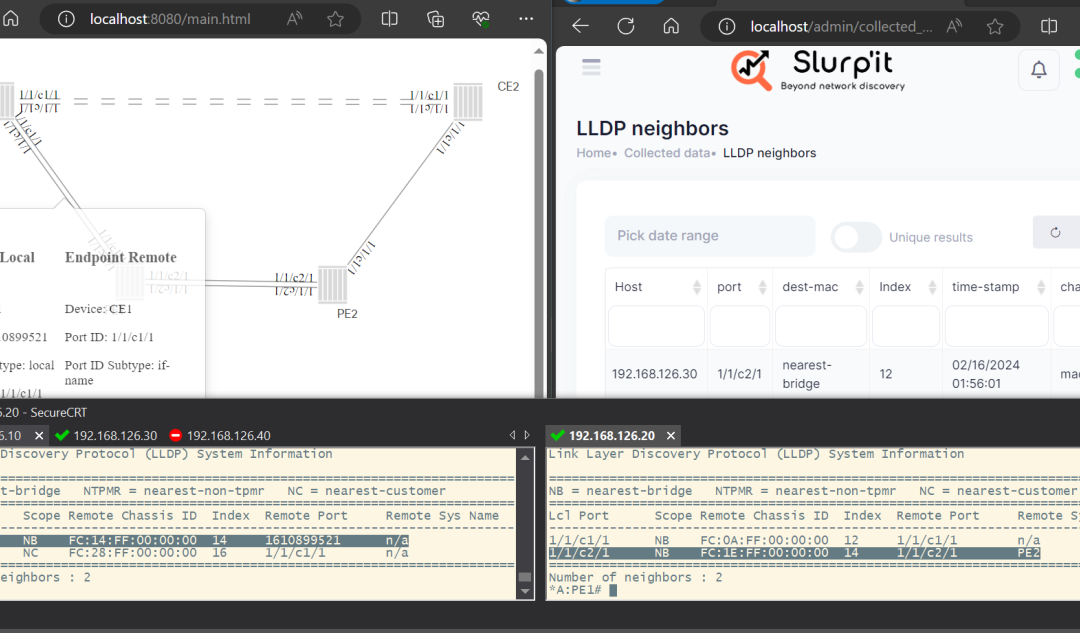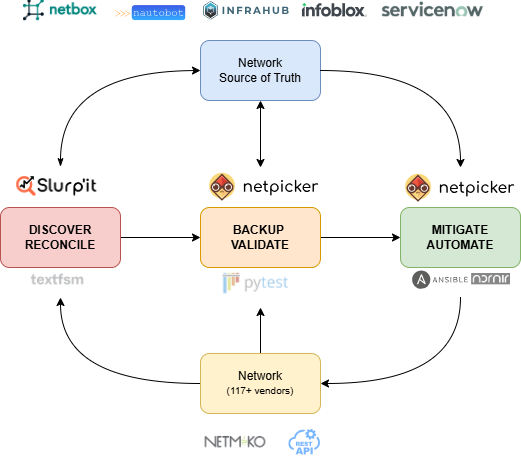With the demands of today, businesses will actually have to try out what works best for the problems of now. Infact for the networks of now. And here’s where intricate IT infrastructures come into the picture in network management.
There are actually a lot. But the most popular ones these days are hybrid IT environments asper Slurp’it.
But, what is the actual meaning of a hybrid IT environment?
It’s basically the combination of traditional on-premises systems with public and private cloud platforms.
And it’s an amazing configuration. It gives businesses the flexibility. Be it with respect to maintaining sensitive data in private systems, or if simply they want to scale (specifically the cloud aspect) in network management.
Similar to all other infrastructures, even this one comes with multiple complexities as per Slurp’it. Down here we will be covering both the challenges and solutions in network management, so let’s get started!
Some key challenges in hybrid IT environments
1. Visibility concerns
Hybrid IT networks covers everything – starting from on-premises data centers, to multiple cloud providers, and remote offices. So what issue that comes here is, how one can maintain visibility across. The situation becomes similar to finding a needle in a haystack in network management.
But, why is it a problem?
If the business doesn’t get clear visibility – a lot of issues can go undetected. There can both be security concerns as well as performance issues. And all of this might make troubleshooting reactive and inefficient.
What’s the solution?
Over here centralized network monitoring tools will work best. For example, SolarWinds or Datadog. These ones offer unified dashboards to provide end-to-end visibility. Businesses can integrate data from multiple sources in network management. And with these tools they can monitor proactively and resolve issues quickly in network management.
2. Network security
Since data moves quite frequently here – be it between on-premises systems, clouds or remote users – the attack surface increase. Attackers get a lot to attack on.
What could be the best strategy here?
- The business can think of implementing a zero trust architecture. With this, they will be able to authenticate every user and device.
- One can even try out end-to-end encryption. Since this will secure data in transit.
- And lastly the business can even think of conducting regular vulnerability assessments. One can even try out penetration tests. As both these tests can best help with identifying and addressing the weaknesses.
3. Performance concerns
When there are inconsistencies in performance, hybrid IT environments often get plagued. And even some applications underperform when accessed via the cloud. So there are a lot of issues that go on here!
What are the probable causes?
The causes can be bandwidth limitations, misconfigurations, or even something related to latency.
How can one fix this?
Fixing is not a major concern. One can adopt Software-Defined Wide Area Network (SD-WAN) technology. This one actually optimizes traffic flow. It also prioritizes bandwidth for applications. Hence the performance doesn’t get affected across all infrastructures.
4. Integration and interoperability
Hybrid setups often involve systems that “speak” different languages. This actually complicates network integration.
Why does this happen?
Cloud providers use proprietary APIs. Also protocols. But on-premises systems often rely on outdated software.
What is the solution?
One can try out middleware solutions. The popular ones being Apache Camel or MuleSoft. These softwares will work as translators. Hence the communication will get easier between disparate systems.
5. Costing
If you are not going the strategic way, Hybrid IT environments can drain you financially. There can be a lot of unanticipated costs. For example, data egress fees.
What smart move can you take here?
Try out network management tools. Specifically the ones that come with cost analytics capabilities. These tools provide actionable insights. You can understand spending patterns. And then you can optimize cost, by simply allocation and minimize unnecessary expenses.
Let’s understand it the easier way!
Take an example of an e-commerce giant. As per Slurp’it they are moving ahead with the hybrid IT approach. However they struggled with slowdowns during peak sales events.
To solve this issue, they implemented cloud auto-scaling and real-time network monitoring. And with this one single step – the company was able to achieve a 40% improvement in response times. The operations got smoother and even customers were more satisfied than ever!
How can you effectively manage your network? (Some best strategies)
- Automate as much as you can. Try out tools like Ansible or Puppet. These will help you to streamline configuration management. You can easily monitor and reduce errors.
- There are multiple stakeholders involved in a hybrid network like onpremises IT teams, cloud providers, and third-party vendors. Communicate clearly. Use platforms like Slack or Microsoft teams.
- Get proactive. Set up threshold-based alerts. It can be for performance and security metrics. This will actually help you with early detection of issues. And any major disruption won’t even happen.
Why is Hybrid IT important for a business to succeed?
Hybrid IT isn’t just a technical setup. It in fact is a strategic enabler in network management. When managed effectively, it drives innovation. Some benefits are:
- One can test applications in the cloud before full-scale deployment
- Businesses can even scale resources to meet all the demand fluctuations
- Improving business continuity gets easier. Since the workload is distributed the right way across all networks.
What’s in for the future?
AI is going to rule the space here too. Machine learning algorithms will come in to predict and resolve network issues in network management. And let’s not forget edge computing. This one will bring processing power closer to end users. They can easily process data in real time as per Slurp’it.
The hybrid IT future is actually here. But, are you prepared to take it on? For more information contact us at Slurp’it!



